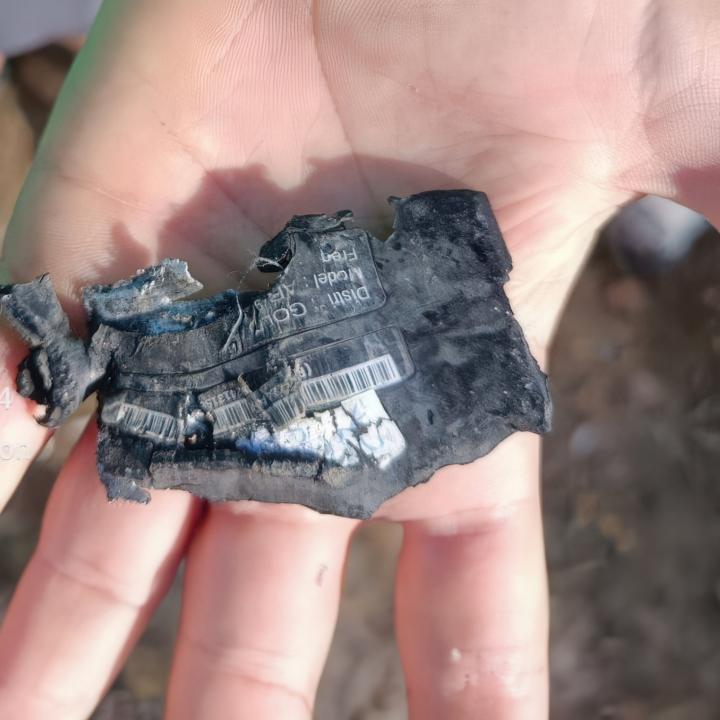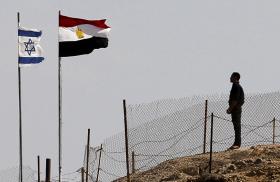
- Policy Analysis
- Articles & Op-Eds
How Exploding Pagers Can Lead to Calm Along Israel-Lebanon Border
Also published in Times of Israel

Washington should push to negotiate limited border understandings now—it makes little sense to open a larger, more catastrophically destructive conflict if the outcome is likely to end up at the same place.
This week’s exploding-pager-and-walkie-talkie attack on Lebanese Hezbollah sends the scary message that Israel, which has so far been mum on its alleged responsibility, can kill, maim or injure thousands of fighters without firing a shot. The subsequent targeted killing of virtually the entire leadership team of Hezbollah’s elite Radwan commando force shows that the terrorist group’s once-vaunted internal security system is a hollow shell.
Played wisely, this moment of Hezbollah weakness, frailty and insecurity could provide an opportunity for Israel—with American help—to force Hezbollah to make a strategic choice: you can either keep the achievement of the de facto security zone built inside northern Israel or keep the asset of the precision-guided missile program, built up by Iran over many years, but you can’t keep both. The outcome could permit the emergence of a new security architecture along the Israel-Lebanon border that fulfills a key Israel war aim of allowing civilians to return to their homes and communities.
Israel has grappled with a security challenge from Lebanon for more than four decades, but the current face-off dates to Hamas’ October 7 attack against Israel’s southern communities. That barbaric assault prompted about 70,000 Israelis to evacuate from towns and villages in the north out of fear they would be targets for a similar cross-border raid by Hezbollah. The result was that Hezbollah scored the huge strategic success of having Israel effectively cede the establishment of a buffer zone inside its own territory in northern Israel.
After October 7, Hezbollah didn’t launch that ground invasion but it did join Hamas’ battle by firing thousands of rockets, missiles, and drones into Israel. Most fell in the largely depopulated border zone but some fell deeper in Israel, as far south as Safed and Acre, killing nearly 50 soldiers and civilians, causing millions of dollars in damage and starting vast forest fires that devastated Israel’s north.
This level of attack reflects a decision by Hezbollah—and, especially, its patron, Iran—to contribute to the “axis of resistance” without throwing all its assets into Hamas’ war. After all, Hezbollah’s main reason-for-being is to be Iran’s own deterrent against potential Israeli or American attack—either against the regime or its crown jewels, its nuclear weapons program. Tehran apparently wants the credit of supporting Hamas while preserving for another day Hezbollah’s most potent threat against Israel, its arsenal of precision guided missiles that can hit deep inside the Jewish state.
For its part, Israel considered—and then rejected—the idea of launching a massive preventive attack against Hezbollah immediately after October 7. Instead, while focusing first on Gaza, it opted to counter Hezbollah with a steady stream of precise aerial and drone strikes against Hezbollah units and facilities, killing nearly 500 of the group’s fighters—including numerous mid- and high-level military commanders—while causing only minimal civilian casualties. Along the way, more than 100,000 Lebanese have been forced to evacuate their homes and communities in southern Lebanon, many of them from Hezbollah’s core Shiite constituency.
Throughout, US policy has focused on preventing the Hamas-Israel war from expanding into other fronts. At best, however, this effort has been only a partial success. On the plus side, except for Iran’s one volley of missiles and drones against Israel on April 13, effectively intercepted by a US-led regional coalition, Tehran has been deterred from direct involvement in the multi-front conflict. But on the minus side, the Iran-backed and -supplied Houthis have confounded US-led efforts to safeguard global shipping and have, remarkably, emerged as significant players in a conflict whose epicenter is hundreds of miles from their Yemen base.
Even just on the Lebanon front, despite the impressive US military deployments and repeated diplomatic missions, Washington has been unable to stop the exchange of cross-border fire or produce enough calm to allow civilians to return to their homes. Part of the reason is that the Biden administration has erred in accepting a basic tenet of Hezbollah’s argument, linking quiet on the north to a ceasefire in the south. Part is because it did not effectively marshal the assets of its friends and allies—both Arab and European—to impose real pressure on Hezbollah. And part of the reason is because the Administration seems to have been aiming too high, looking for a deal that may be too ambitious for the moment.
According to reports, US diplomacy has pursued an Israel-Lebanon (that is, to be more precise, Israel-Hezbollah) agreement that would include progress on contested border demarcation between the two sides as well as elements from UN Security Council resolution 1701 of 2006, the never-implemented ceasefire resolution that marked the end of the last Hezbollah-Israel war. Such terms would require significant concessions by each party that neither is likely to accept in this politically fraught moment.
The current tense situation is just not ripe for that sort of deal. But the surprise pager attack on Hezbollah forces, followed the next day by a similarly high-tech attack via walkie-talkies, and then the elimination of almost the entire remaining Hezbollah military command structure, may have shifted the ground under Hezbollah enough to provide an opportunity for the two sides to reach a smaller, narrower deal.
With its breathtaking mix of audacity and lethality, this week’s series of assaults on Hezbollah registered multiple successes. It threw Hezbollah’s communications capability back to the stone-age. It removed a huge number of Hezbollah personnel and commanders from a battlefield stretching from southern Lebanon to the Bekaa Valley to Syria. And it injected an acute sense of fear both in all those who survived as well as in a civilian population that now views association with Hezbollah as a threat to its personal security. Subsequent exchanges of Hezbollah rocket fire and Israeli aerial attacks only deepen the anger of many Lebanese at Hezbollah’s decision to ensnarl the country in Hamas’ faraway war.
On a political level, the shock of these serial attacks may have succeeded in untethering Hezbollah’s action from the unresolved war in Gaza, opening the potential for diplomatic movement in Lebanon even without an Israel-Hamas ceasefire. Indeed, panic in Hezbollah’s ranks about what might come next may be strong enough to convince its leadership that giving up the de facto security zone inside northern Israel is a reasonable price to pay to avoid the next lethal surprise. Now is the time for quiet US diplomacy to test that proposition.
What might such a narrow deal look like? In the current environment, it could just be a modest set of unwritten understandings in which the two sides commit to suspend cross-border fire and allow civilians to return to their homes—Israelis to the north of their country, Lebanese to the south of theirs. As part of the understanding, Hezbollah will remove all significant military assets from a zone north of the border and Israel will look the other way at Hezbollah fighters coming back to the south, as long as they are dressed as civilians, operate no heavy weapons, and do not deploy in military units or formations. It can do this because there will be no limitation on the deployment of Israel Defense Force troops and assets on Israel’s side of the border. Why the imbalance? Because Israel’s army—not the Hezbollah-infiltrated Lebanese Armed Forces nor the feckless UN peacekeeping unit long stationed in Lebanon—will be empowered to enforce the calm.
This is not a perfect deal. By giving up the achievement of a de facto security zone inside northern Israel, Hezbollah would get to keep the lion’s share of its most menacing weapons—precision-guided missiles. But the massive presence of IDF troops along the northern border today should provide the deterrence against infiltration and attack that Israel lacked on its southern border on October 7. And Israel has identified returning citizens to the north, not the eradication of Hezbollah’s broader threat to the country, as among its war aims.
Some in Israel take a different view. They argue that the wind-down of military activity in Gaza, even without a ceasefire that brings home Israel’s remaining hostages, allows Israel to re-focus its military might against Hezbollah. This could either take the form of an operation to re-establish an Israeli-controlled buffer on the Lebanese side of the border (an option which didn’t end well for Israel the last time it was tried) or, more ambitiously, to launch a full-scale invasion to decapitate Hezbollah’s leadership, eviscerate its fighting force and destroy its missile arsenal. That level of military move would likely include heavy damage to Lebanon’s civilian infrastructure, perhaps leveling much of Beirut. At the same time, it will likely trigger volleys of as many precision-guided missiles that Hezbollah can launch before they are hit by the Israeli air force. Casualties on both sides could be high; the impact could be catastrophic. And, one should point out, there is no guarantee this bold initiative would bring Israeli civilians back to their homes.
With so much blood on its hands, there is no doubt that Hezbollah deserves to be hit hard. But the organization once characterized by US officials as the “A-team” of terrorists is a far larger and more capable force than Hamas which, despite massive losses, has managed to survive nearly a year fighting the IDF. Notwithstanding the spectacular performance of Israel’s clandestine services and air force this past week, it is an analytical stretch to argue that the IDF, tired and depleted from a year of war, will be more effective against Hezbollah now than it has been against Hamas. It is at least as likely that Israel finds itself in a war of attrition on its northern front as costly as its experience in the south. When the dust settles, it would not be surprising for Israel to seek some form of conflict-management understandings with Hezbollah that are very likely to resemble what may be on the table now, understandings that may be both achievable and enforceable without the death, destruction and bloodshed of a major operation.
Given Hezbollah’s responsibility for killing hundreds of Americans going back decades, no US administration will shed tears at the demise of Hezbollah commanders or the battering of Hezbollah military capabilities. This is the case even though the real address for Hezbollah decision-making is Tehran, not Hezbollah’s headquarters in the southern suburbs of Beirut—a reality neither Washington nor Jerusalem seems ready to address.
But it makes little sense to pass through the dark tunnel of confrontation, with its terrible toll on both Israelis and Lebanese, if the outcome is likely to end up at the same place—a set of limited, negotiated understandings that could produce a measure of calm across the border. Now is the moment for US diplomacy to explore that possibility, and the Biden team should pursue it.
Robert Satloff is the Segal Executive Director and Howard P. Berkowitz Chair in U.S. Middle East Policy at The Washington Institute. This article was originally published on the Times of Israel website.



